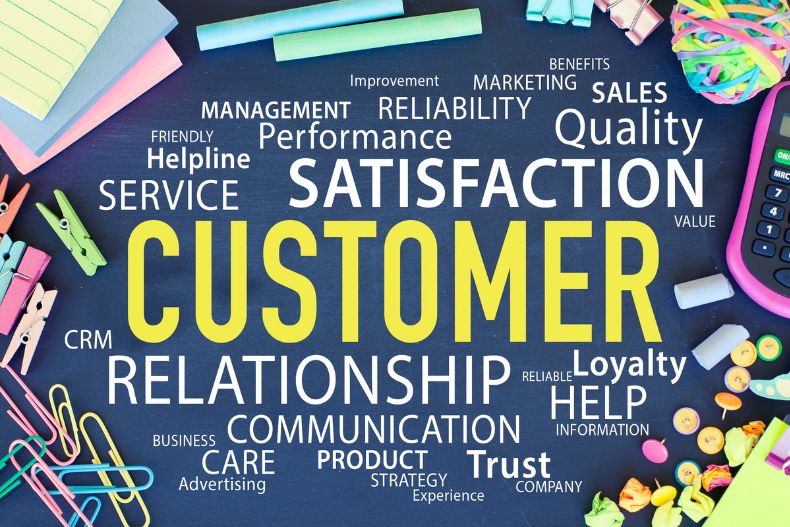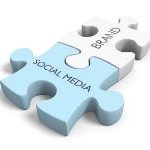When it comes to growing your business, you may think that targeting new customers is the key to success — but, that’s not always the case. While new audiences are a big part of expanding your company, you should never forget about your existing customers.
According to a now-famous Bain & Company and Harvard Business School report, increasing your customer retention rate by just 5% can result in profit increases from 25% all the way to 95%.
In other words, loyal customers play a valuable role in your company’s growth.
Not only are they more likely to buy themselves, but they can also become brand advocates, spreading the word about your business to friends, family, and colleagues. Knowing just who your most loyal customers are is essential. But, figuring out who those people are is not always easy.
You’ll need in-depth data to help you get a full picture of who your biggest champions are.
5 Metrics to Help You Find Your Most Loyal Customers

Certain metrics can allow you to better understand your most loyal customer’s behavior and preferences. This information is invaluable as it can have far-reaching implications. It can help you optimize your marketing, sales efforts, and even the product itself.
Let’s get into what to look at when measuring customer loyalty.
1. Marketing Funnel Engagement
Your marketing funnel consists of three stages: top of the funnel, middle of the funnel, and bottom of the funnel.
At the top of the funnel, you may not be talking to customers directly. At this stage, many potential buyers are doing their own research. However, your ads, blog posts, and social media posts may steer them in your direction, where they’ll go to the middle of the funnel.
At this stage, they’re looking at you specifically, wondering if your product can get the job done for them. Case studies, self-assessment tools, and product videos can help them get a complete picture of what you offer. If everything checks out with them, they can venture into the bottom of the funnel, where the sales team can focus on closing the deal.
However, these three stages are just the beginning. Many marketing professionals suggest adding more stages to the bottom, during which you remain in touch with your new client, helping them with adopting your product. After you close the deal with one client, you’ll want to keep an eye on how they re-engage with your marketing funnel.
Considering that you’re more likely to resell to an existing customer than acquire a new one, you want to ensure that you essentially redirect your customer back through the funnel, with a focus on the second and third stages. You want to demonstrate to the client how your other products can solve additional problems for them, which can help you gain them as a repeat customer.
Measuring and boosting engagement through post-sale is crucial so that you never lose communication with your most lucrative customer type — existing ones.
2. Personalized Engagement Response Rates
Speaking of communication, we’re living in the era of personalized connections. A study by WP Engine and the Center for Generational Kinetics found that Gen Zers expect personalization. They’ll leave a website that doesn’t seem to know what they want or predict what they need. They don’t like marketing that doesn’t target them directly.
Personalized touches matter when trying to make a sale, especially when it comes to customer loyalty. If a customer purchased from you and you’re not using the data you acquired to show them more products they might like, you’re doing yourself a major disservice and not using that data effectively.
Once you make a sale with a customer, you have to keep that connection going. A simple phone call can remind a client that you’re there and ready to help them. However, you can take the call a step further by contacting them when you have a new product that you think fits their needs. Making such a call confirms that you’re still thinking about the customer and have an idea of what they may be looking for.
3. Transaction Completion Rates
With electronic payments becoming the norm, you might have a wealth of data that you’re ignoring. Electronic payments can help protect your customer’s privacy, but they can also allow you to gain data that you can use when measuring customer loyalty.
One such metric to keep an eye on is your transaction completion rate. When a customer goes through your website, you can look out for where the stopping points are. Who is making it to the purchase phase? Are they buying once they’re there? This information can enable you to see what might need to change about your purchasing process.
Along the same lines, you also want to look at the data collected by your electronic payments to see your repeat sales. Who is coming back again and again and successfully completing a purchase? Those people are the loyal customers you want to keep targeting.
4. Upsell Ratio
While repeat purchases are essential for your businesses success, so too are upsells.
According to HubSpot’s 2024 State of Sales Report, 91% of sales folks try to upsell customers. And, upsells tend to be responsible for about 21% of company revenue.
When you build deeper relationships with your customers, you establish a rapport. You can build on that communication to guide your customer toward an upsell. Keeping an eye on your upsell ratio is valuable in measuring customer loyalty as it tells you how much your customers trust you to help them choose the offerings that are best for them. More loyal customers are more likely to want to continue working with you and see what else you have to offer beyond their initial purchase.
5. Net Promoter Score
Sometimes, measuring customer loyalty doesn’t have to be all that difficult. On many websites, you’ll see a survey, often popping up after a purchase, asking customers to rate how likely they are to recommend a business to someone else. The average score on surveys like this is your net promoter score (NPS). A high score means they’re likely to recommend you. A low NPS might suggest there’s something you need to change.
While these surveys don’t actually mean that someone is going to recommend you to a friend, they do help you gauge customer loyalty. Your net promoter score indicates how many loyal customers you may have, who may just turn into brand advocates.
Measuring Customer Loyalty is Still Critical in the Digital Age
In today’s digital world, collecting data is easier than in more manual eras that came before.
However, what still matters most is what you do with that information. When you gather data that assist you in measuring customer loyalty, you can use that information to successfully retarget buyers and even encourage them to upsell, bringing in more revenue for you.
You’re more likely to make more sales from existing customers than potential buyers, so it’s vital that you re-engage your existing customers through data-driven marketing funnels, personalized communication, and optimized sales processes. With the right connections, those loyal customers may even become an extension of your marketing team, bringing in new customers to allow you to start the cycle all over again.











